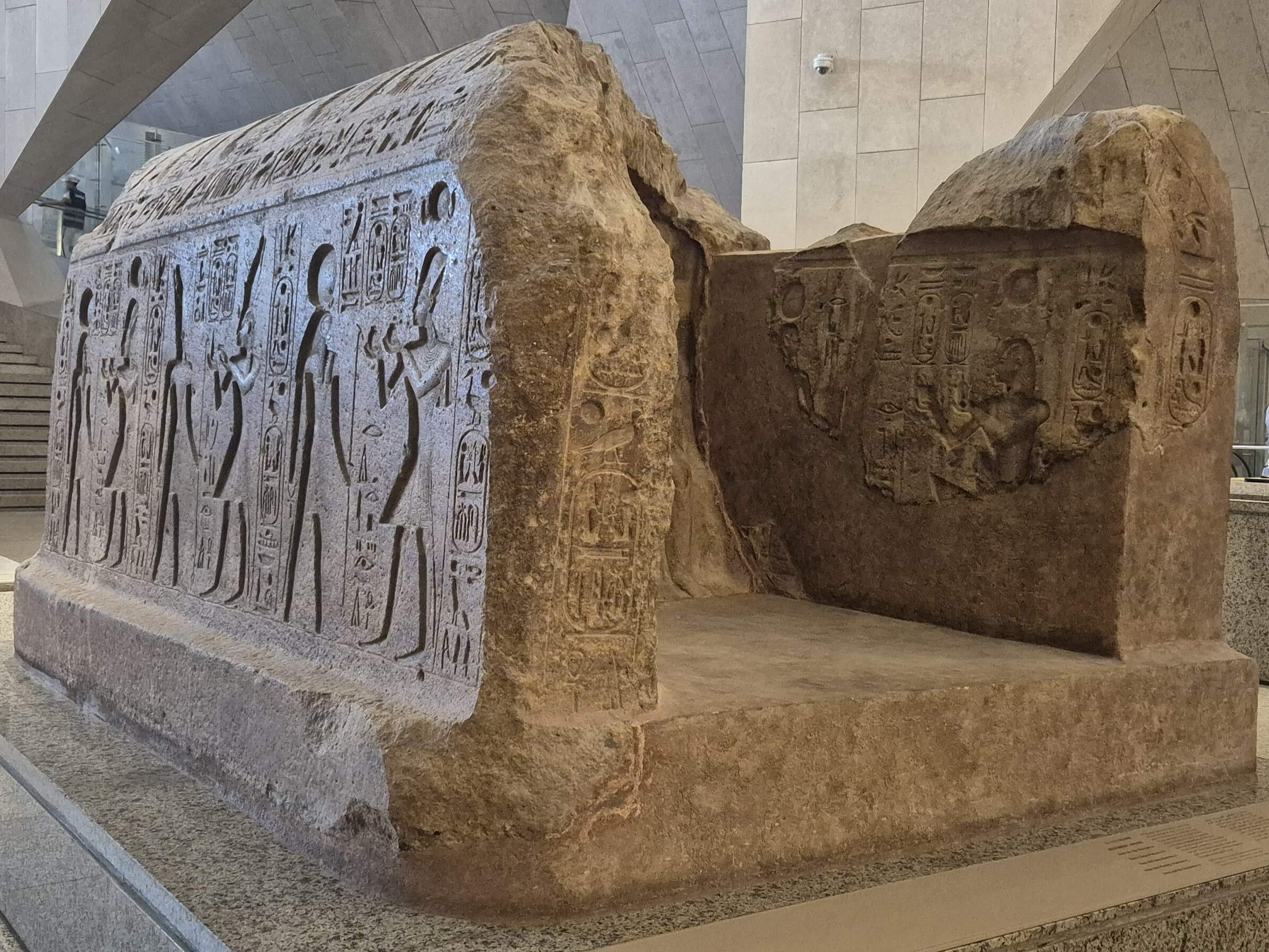
GEM 7826
Naos of King Ramesses II
This grand Naos—a sacred shrine carved from a single block of sandstone—was discovered along the processional route to the Great Temple of Amun in Tanis, a major city in Egypt’s Delta region. The shrine dates back to the reign of Ramesses II (1279–1213 BCE), one of the most powerful pharaohs of the New Kingdom’s 19th Dynasty.
A naos served as the divine chamber of a temple, housing cult statues of deities and preserving offerings and prayers. In this case, the naos was not only dedicated to the gods, but it also visually portrayed Ramesses II himself presenting offerings to the gods—emphasizing the king’s role as intermediary between the divine and human worlds.
Carved on the ... Entdecken Sie mehr mit Premium!
Entsperren Sie die vollständige Geschichte dieses ArtefaktsWerden Sie Premium-Mitglied, um auf die vollständige Beschreibung, Audioguides und exklusive Inhalte aller Artefakte zuzugreifen.Erhalten Sie vollen Zugriff auf Audio und Beschreibung der wichtigsten Artefakte des GEM für nur 1,99 $
Suchen Sie ein weiteres Artefakt?